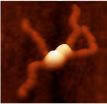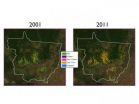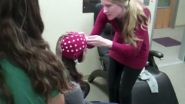(Press-News.org) DETROIT – Researchers have found that antiviral therapy may be successful in preventing hepatitis B virus from developing into the most common form of liver cancer, hepatocellular carcinoma (HCC).
That was the finding of a study published in the May issue of Clinical Gastroenterology and Hepatology. Investigators from Henry Ford Health System in Detroit, Geisinger Health System in Danville, Pa., and Kaiser Permanente in Honolulu, Hawaii and Portland, Ore. participated in the study, along with investigators from the Centers for Disease Control and Prevention in Atlanta.
According to the first-of-its-kind analysis of more than 2,600 adult participants with hepatitis B, those treated with antiviral therapy had a significantly lower occurrence of HCC during a five-year follow up period. Overall, 3 percent of patients developed HCC during the study's timeframe. But patients who received antiviral therapy were 60 percent less likely to develop HCC than untreated patients.
"The results of this study allow us to reassure our patients that we are not just treating their viral levels, but that antiviral therapy may actually lessen their chance of developing liver cancer," said the study's lead investigator, Henry Ford Health System's Stuart C. Gordon, M.D., who worked closely with Henry Ford Senior Scientist Mei Lu in Detroit.
HCC accounts for the most liver cancers in the United States, typically occurs in people age 50 or older and is more common in men. If the cancer cannot be removed, it is usually fatal in three to six months. In most cases, HCC is caused by scarring in the liver – cirrhosis – which can be a result of alcohol abuse, hepatitis B or C, chronic inflammation of the liver or an iron overload.
"This study was one of the first to address antiviral therapy and its efficacy in preventing hepatitis B from developing into liver cancer," said Joseph Boscarino, Ph.D., senior scientist and investigator for the Geisinger site. "With this information, clinicians can begin to prescribe antiviral therapy for hepatitis B patients with the goal of preventing a common and dangerous form of cancer."
INFORMATION:
About Geisinger Health System
Geisinger Health System is an integrated health services organization widely recognized for its innovative use of the electronic health record, and the development of innovative care models such as ProvenHealth Navigator® and ProvenCare®. As one of the nation's largest rural health services organizations, Geisinger serves more than 2.6 million residents throughout 44 counties in central and northeast Pennsylvania. The physician-led system is comprised of more than 21,000 employees, including a 1,100-member multi-specialty group practice, eight hospital campuses, two research centers and a 467,000-member health plan, all of which leverage an estimated $7.4 billion positive impact on the Pennsylvania economy. The health system and the health plan have repeatedly garnered national accolades for integration, quality and service. In addition to fulfilling its patient care mission, Geisinger has a long-standing commitment to medical education, research and community service. For more information, visit http://www.geisinger.org, or follow the latest Geisinger news and more on Twitter and Facebook.
About Henry Ford Health System
Henry Ford Health System, one of the country's largest and most comprehensive integrated health care systems, is a national leader in clinical care, research and education. The system includes the 1,200-member Henry Ford Medical Group, seven hospitals, 34 outpatient medical centers, Health Alliance Plan (a health insurance and wellness company), Henry Ford Physician Network, a 150-site ambulatory network and many other health-related entities throughout southeast Michigan, providing a full continuum of care. The health system also is a major economic driver in Michigan and employs more than 23,000 people. Henry Ford is a 2011 Malcolm Baldrige National Quality Award recipient. The health system is led by CEO Nancy Schlichting. To learn more, visit http://www.HenryFord.com or follow us on Facebook or @HenryFordNews on Twitter.
Antiviral therapy may prevent liver cancer in hepatitis B patients
2014-06-09
ELSE PRESS RELEASES FROM THIS DATE:
How much fertilizer is too much for the climate?
2014-06-09
EAST LANSING, Mich. — Helping farmers around the globe apply more-precise amounts of nitrogen-based fertilizer can help combat climate change.
In a new study published in this week's Proceedings of the National Academy of Sciences, Michigan State University researchers provide an improved prediction of nitrogen fertilizer's contribution to greenhouse gas emissions from agricultural fields.
The study uses data from around the world to show that emissions of nitrous oxide, a greenhouse gas produced in the soil following nitrogen addition, rise faster than previously expected ...
Coral, human cells linked in death
2014-06-09
SAN DIEGO (June 6, 2014) — Humans and corals are about as different from one another as living creatures get, but a new finding reveals that in one important way, they are more similar than anyone ever realized.
A biologist at San Diego State University has discovered they share the same biomechanical pathway responsible for triggering cellular self-destruction. That might sound scary, but killing off defective cells is essential to keeping an organism healthy.
The finding will help biologists advance their understanding of the early evolution of multicellular life, ...
Researchers recast addiction as a manageable disease
2014-06-09
Neuroscientists agree that abuse of drugs hijacks circuits in the brain that are crucial for decision-making, but society as a whole tends to stigmatize addicted people for lacking self-control. Slowly but steadily, scientists say, they are making important progress in changing the perception of addiction as they identify new therapeutic interventions that could render addiction into the equivalent of a manageable disease like diabetes.
A group of addiction researchers, for one, recently recommended to the Commission on Narcotic Drugs, part of the United Nations Office ...
Protein could put antibiotic-resistant bugs in handcuffs
2014-06-09
DURHAM, N.C. -- Staph infections that become resistant to multiple antibiotics don't happen because the bacteria themselves adapt to the drugs, but because of a kind of genetic parasite they carry called a plasmid that helps its host survive the antibiotics.
Plasmids are rings of bare DNA containing a handful of genes that are essentially freeloaders, borrowing most of what they need to live from their bacterial host. The plasmids copy themselves and go along for the ride when the bacteria divide to copy themselves.
A team from Duke and the University of Sydney in ...
Parent and child must get enough sleep to protect against child obesity
2014-06-09
URBANA, Ill. – Is sleep one of your most important family values? A new University of Illinois study suggests that it should be, reporting that more parental sleep is related to more child sleep, which is related to decreased child obesity.
"Parents should make being well rested a family value and a priority. Sleep routines in a family affect all the members of the household, not just children; we know that parents won't get a good night's sleep unless and until their preschool children are sleeping," said Barbara H. Fiese, director of the U of I's Family Resiliency Center ...
Land quality and deforestation in Mato Grosso, Brazil
2014-06-09
PROVIDENCE, R.I. [Brown University] — The state of Mato Grosso is the epicenter of an agricultural revolution in Brazil. During the last 15 years, expansion of agriculture in the state has helped Brazil become one of the world's top producers of soy, corn, cotton, and other staple crops. Despite the increase in production, the rate at which Amazon forestland in the state was cleared to make room for new farmland slowed significantly in the second half of the last decade.
Much of the credit for slowing deforestation has been given to government policies and intervention, ...
Does 'free will' stem from brain noise?
2014-06-09
VIDEO:
UC Davis researchers found that the pattern of electrical activity in the brain immediately before making a decision can predict the choice made. This video shows how these experiments are...
Click here for more information.
Our ability to make choices — and sometimes mistakes — might arise from random fluctuations in the brain's background electrical noise, according to a recent study from the Center for Mind and Brain at the University of California, Davis.
"How ...
Humanitarian liking on Facebook
2014-06-09
"Liking" a page on the social networking site Facebook is a new form of civic engagement and humanitarian support, so concludes research published in the International Journal of Web Based Communities. According to the paper's authors social motives and an emotional response underpinned users' inclination to like, or follow, a page, rather than their simply seeking information and news.
Petter Bae Brandtzaeg and Ida Maria Haugstveit of Scandinavian research organization SINTEF in Oslo, Norway, surveyed more than 400 Facebook users about their habits on the site and their ...
Berkeley Lab researchers create nanoparticle thin films that self-assemble in 1 minute
2014-06-09
The days of self-assembling nanoparticles taking hours to form a film over a microscopic-sized wafer are over. Researchers with the U.S. Department of Energy (DOE)'s Lawrence Berkeley National Laboratory (Berkeley Lab) have devised a technique whereby self-assembling nanoparticle arrays can form a highly ordered thin film over macroscopic distances in one minute.
Ting Xu, a polymer scientist with Berkeley Lab's Materials Sciences Division, led a study in which supramolecules based on block copolymers were combined with gold nanoparticles to create nanocomposites that ...
'Hello, world!' NASA beams video from space station via laser
2014-06-09
"Hello, World!" came the message from the International Space Station as NASA successfully beamed high-definition video via laser from space to ground on Thursday, June 5. The 175-megabit video transmission was the first of its kind for the Optical Payload for Lasercomm Science (OPALS) with the goal of improving the way we receive data from orbit and beyond. In fact, this emerging technology of optical communications--or lasercomm--is likened to an upgrade from dial-up to DSL.
"It's incredible to see this magnificent beam of light arriving from our tiny payload on the ...






